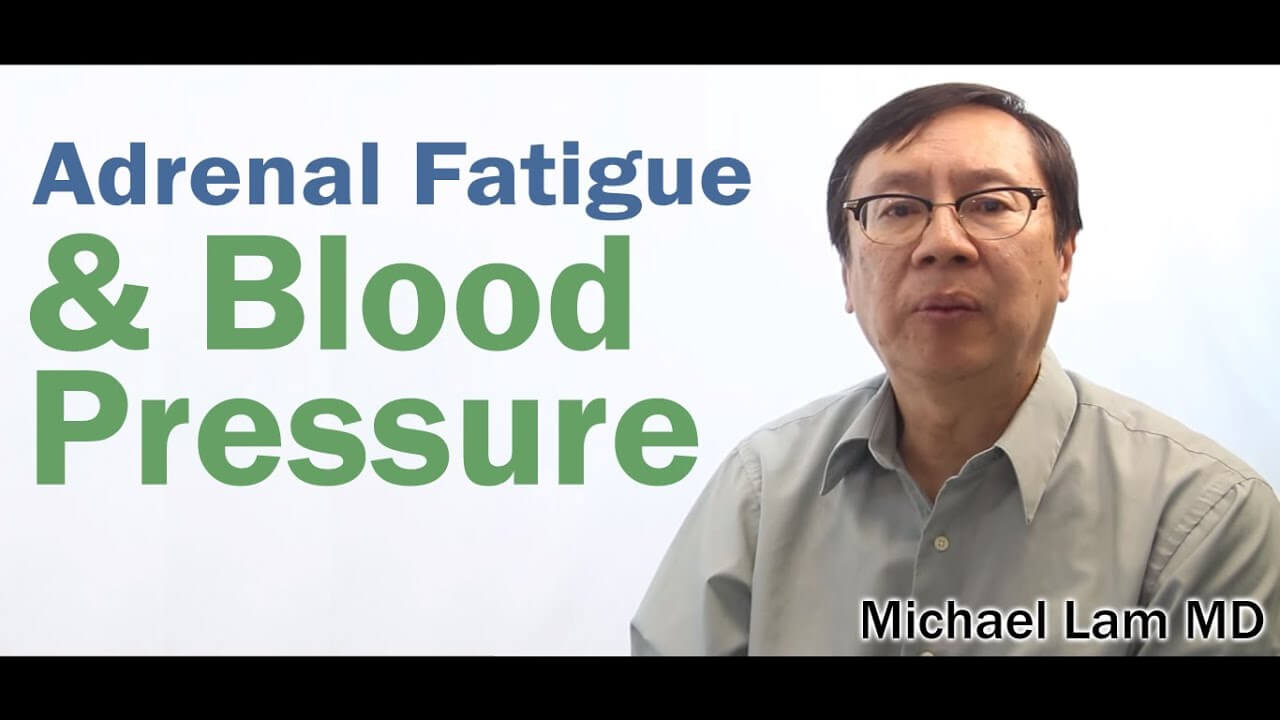
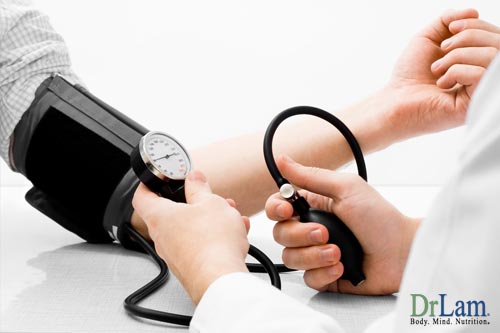 Blood pressure is an important indicator of adrenal health and function. Mild adrenal weakness is usually accompanied by normal to high blood pressure symptoms. As Adrenal Fatigue advances, low blood pressure, at rest or related to posture becomes more prevalent. This paper will attempt to examine how a weak adrenal can drastically alter the blood pressure landscape in the body. In particular, we will examine the physiology behind low blood pressure within a setting of advanced Adrenal Fatigue and the wide variety of low blood pressure symptoms such as dizziness, lightheadedness, orthostatic hypotension and heart palpitations that accompany this state.
Blood pressure is an important indicator of adrenal health and function. Mild adrenal weakness is usually accompanied by normal to high blood pressure symptoms. As Adrenal Fatigue advances, low blood pressure, at rest or related to posture becomes more prevalent. This paper will attempt to examine how a weak adrenal can drastically alter the blood pressure landscape in the body. In particular, we will examine the physiology behind low blood pressure within a setting of advanced Adrenal Fatigue and the wide variety of low blood pressure symptoms such as dizziness, lightheadedness, orthostatic hypotension and heart palpitations that accompany this state.
Blood pressure is the force exerted by circulating blood on the walls of blood vessels. It constitutes one of the key vital signs of life, along with heartbeat, rate of breathing, and temperature. Blood pressure is generated by the heart pumping blood into the arteries and is regulated by the response of the arteries to the flow of blood.
A person's blood pressure is expressed as systolic/diastolic blood pressure, for example, 120/80. The systolic blood pressure (the top number) represents the pressure in the arteries as the muscle of the heart contracts and pumps blood into them. The diastolic blood pressure (the bottom number) represents the pressure in the arteries as the muscle of the heart relaxes after it contracts. Blood pressure is always higher when the heart is pumping (squeezing) than when it is relaxing.
Systolic blood pressure for most healthy adults falls between 90 and 120 millimeters of mercury (mm Hg). Diastolic blood pressure falls between 60 and 80 mm Hg. The commonly accepted guidelines define normal blood pressure as lower than 120/80. Blood pressures over 130/80 are considered high.
Unlike high blood pressure, low blood pressure is defined primarily by particular low blood pressure symptoms and not by a specific blood pressure number. Low blood pressure is not defined by blood pressure readings below a certain threshold. Vegetarians, for example, generally have low blood pressure and at the same time are quite healthy and asymptomatic. Some individuals may have a blood pressure of 90/50 with no low blood pressure symptoms and therefore do not have low blood pressure clinically. However, others who normally have high blood pressure may develop low blood pressure symptoms if their blood pressure drops to 100/60.
When the blood pressure is not high enough to deliver adequate blood flow to the organs of the body, the organs may be damaged. Low blood pressure symptoms or signs of insufficient blood flow to the brain/brain cells include lightheadedness, dizziness, or fainting.
If the blood pressure is already low, standing can make the low blood pressure symptoms worse, to the point of causing severe dizziness and even fainting episodes. This is called orthostatic hypotension. Under normal conditions, the body compensates rapidly for the low pressure created by standing using various automatic responses mediated by the autonomic nervous system (ANS). If there is dysfunction in the ANS (as frequently seen in advanced Adrenal Fatigue) orthostatic hypotension may be exhibited.
 Adrenal Fatigue should not be confused with another medical condition called Addison's disease, where the adrenal glands are not functioning. While Addison's disease is often caused by autoimmune dysfunction, Adrenal Fatigue is largely caused by stress. Adrenal Fatigue is the non-Addison's form of adrenal dysfunction in a sub-clinical form. If you have symptoms such as tiredness, fearfulness, allergies, frequent influenza, arthritis, anxiety, depression, reduced memory and difficulties in concentrating, insomnia, feelings of being worn-out, and the inability to lose weight after extensive efforts, you may be suffering from Adrenal Fatigue (technically known as hypoadrenia).
Adrenal Fatigue should not be confused with another medical condition called Addison's disease, where the adrenal glands are not functioning. While Addison's disease is often caused by autoimmune dysfunction, Adrenal Fatigue is largely caused by stress. Adrenal Fatigue is the non-Addison's form of adrenal dysfunction in a sub-clinical form. If you have symptoms such as tiredness, fearfulness, allergies, frequent influenza, arthritis, anxiety, depression, reduced memory and difficulties in concentrating, insomnia, feelings of being worn-out, and the inability to lose weight after extensive efforts, you may be suffering from Adrenal Fatigue (technically known as hypoadrenia).
Typical blood pressure of a person in Adrenal Fatigue ranges from normal to high in early stages and then progresses to low in later stages.
When the body is under stress, blood pressure usually goes up first as the body releases chemicals that raise blood pressure. This, in turn, sets off a series of compensatory responses resulting in normalization of blood pressure if the body functions are intact and no symptoms surface. Dysfunction of such compensatory mechanisms leads to persistent high blood pressure. This picture changes drastically, however, if because of stress, the adrenals become exhausted and are unable to mount a compensatory response. In this case, blood pressure usually drops below normal as the compensatory mechanism fails. This is especially prominent during postural changes.
Blood pressure in a normal person usually drops as a person stands after lying down due to gravitational forces. This drop immediately triggers the ANS, which causes the blood pressure to return to normal accounting for some overshoot. The rise in pressure on standing usually ranges from 10-20 mm Hg. This overshoot normalizes in a short time and the overall blood pressure returns to normal. A healthy person will not feel this behind the scenes automatic compensatory response under normal circumstances. If the blood pressure drops instead of rises when rising, it is called postural hypotension. There are many causes of postural hypotension, from dehydration to heart disease. It is important to have a thorough conventional medical investigation if the symptoms are clinically significant.
Blood pressure can be low at rest and not considered abnormal. Many have low resting blood pressure under 90/60 and function very well.
The key determinant of whether low blood pressure is clinically significant is whether it is accompanied by symptoms, and whether or not it is postural related.
Low blood pressure symptoms include dizziness and lightheadedness. In Adrenal Fatigue, low blood pressure usually occurs at rest. However, it can be more prominent when there is postural change. In severe cases, sufferers cannot maintain a standing posture for an extended time without sitting down. Multiple trips to the emergency room and extensive workups are not uncommon. Conventional investigative studies are often unremarkable and futile while blood pressure symptoms become more pronounced over time as Adrenal Fatigue progresses.
The key hormones responsible for blood pressure regulation in the Adrenal Fatigue setting are aldosterone and cortisol. Both are low in advanced stages of Adrenal Fatigue such as adrenal exhaustion. Aldosterone is a hormone secreted by the adrenal cortex, which is part of the rennin-angiotensin-aldosterone system (RAS), which regulates blood pressure. 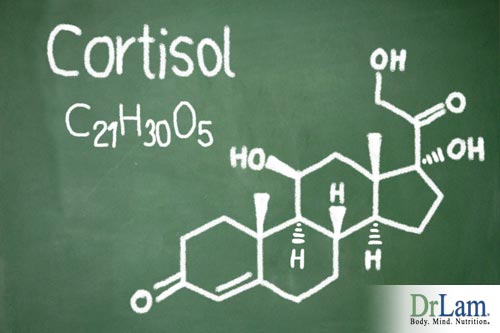 Cortisol is a hormone that is secreted by the adrenal cortex under the direction of the Hypothalamus-Pituitary-Adrenal (HPA) axis and is a main anti-stress hormone. Low aldosterone and cortisol levels both lead to low blood pressure symptoms. When the blood pressure drops, blood flow to the brain reduces. A person becomes dizzy and lightheaded. The body then automatically activates its emergency repair system. The ANS is activated as a compensatory mechanism, with associated blood pressure symptoms such as heart palpitations, increased heart rate, skin pallor, increased strength of each heartbeat, increased respiratory rate, and fainting in severe cases.
Cortisol is a hormone that is secreted by the adrenal cortex under the direction of the Hypothalamus-Pituitary-Adrenal (HPA) axis and is a main anti-stress hormone. Low aldosterone and cortisol levels both lead to low blood pressure symptoms. When the blood pressure drops, blood flow to the brain reduces. A person becomes dizzy and lightheaded. The body then automatically activates its emergency repair system. The ANS is activated as a compensatory mechanism, with associated blood pressure symptoms such as heart palpitations, increased heart rate, skin pallor, increased strength of each heartbeat, increased respiratory rate, and fainting in severe cases.
The following are important causes of low blood pressure that need to be investigated prior to considering Adrenal Fatigue as the culprit.
Dehydration. Dehydration reduces the volume of blood and reduces cardiac output (the amount of blood pumped by the heart). It is common among patients who have prolonged vomiting, diarrhea, nausea, and Adrenal Fatigue. Paradoxically, dehydration is also a common cause of high blood pressure as the body may overcompensate by constricting blood vessels in order to prevent reduced low pressure in early Adrenal Fatigue and normal people alike. In fact, taking more fluid can be quite helpful in the majority of essential hypertension cases in its early stages.
Heart disease. Heart disease such as weakened heart muscle, pericarditis, bradycardia, arrhythmias, heart block, and tachycardia can also lead to low blood pressure as the heart is unable to maintain the stroke volume to supply adequate blood flow to the body. Arrhythmia is more prevalent in those with ANS dysfunction. Persistent overtones of the SNS increase the release of norepinephrine. Chronic increases of norepinephrine can lower the heart's threshold for cardiac arrhythmia, which is commonly seen in Adrenal Fatigue.
Medications. Medications such as calcium channel blockers, beta-blockers, and digoxin (Lanoxin) can slow the rate at which the heart contracts. Elderly people are especially susceptible. Medications used in treating high blood pressure can excessively lower blood pressure and result in symptomatic low blood pressure as well. Water pills (diuretics) such as furosemide (Lasix) can decrease blood volume by causing excessive urination. Medications for adrenal fatigue treatment of Parkinson's disease, such as levodopa-carbidopa (Sinemet), and medications used for treating depression, such as amitriptyline (Elavil), erectile dysfunction (impotence), such as sidenafil (Viagra), vardenafil (Levitra), and tadafil (Cialis) when used in combination with nitroglycerine, can cause low blood pressure.
Less common causes include septicemia, alcoholism, diabetes, shock, kidney disease, vasovagal reaction, micturition syncope, anaphylaxis, and certain rare neurological syndromes such as Shy-Drager syndrome that damage the ANS, and Addison's disease.
In the absence of any of the above-mentioned causes after a full conventional medicine investigation, Adrenal Fatigue should be considered.
We shall now examine each of these three major contributors to blood pressure dysregulation in Adrenal Fatigue aldosterone, cortisol, and the autonomic nervous system (ANS) in detail. These three form an intricate web of interdependency and interactions that ultimately determine blood pressure.
 Aldosterone is a chemical that regulates the amount of salt in the body. It is a very specific compound responsible for maintaining the concentration of sodium and potassium inside and outside the cell. This in turn has a direct effect on the amount of fluid in the body and thus blood pressure.
Aldosterone is a chemical that regulates the amount of salt in the body. It is a very specific compound responsible for maintaining the concentration of sodium and potassium inside and outside the cell. This in turn has a direct effect on the amount of fluid in the body and thus blood pressure.
It is manufactured in the adrenal cortex under the direction of another hormone called ACTH (adrenocorticotrophic hormone). ACTH is produced by the anterior pituitary gland. ACTH stimulates the adrenal cortex to secrete a wide variety of hormones including aldosterone as well as cortisol. Like cortisol, aldosterone follows a diurnal pattern of secretion, peaking at 8 a.m., and at it's lowest from 12-4 a.m.
It is important to note that in our body, sodium and water go hand in hand. Where sodium goes, water follows. As the concentration of aldosterone rises in the body, the concentration of sodium and water rises; thus more fluid is retained in the body and blood pressure rises. Conversely, when the level of aldosterone lowers, the amount of sodium and water in the body is reduced. Therefore, the blood pressure goes down.
As mentioned earlier, aldosterone is part of the rennin-angiotensin-aldosterone system (RAAS) that is responsible for regulating and maintaining sodium balance in the body. Dietary sodium restriction stimulates RAAS activity, while sodium loading reduces the RAAS activity.
Along with the SNS, the brain, therefore, has two primary regulatory systems that it relies on to maintain appropriate levels of blood pressure, cardiac filling volume, blood volume, and potassium/sodium balance in the body.
Unlike cortisol, aldosterone does not have its own negative feedback loop when there are excessive amounts. If the aldosterone level is too high, aldosterone receptor sites are down regulated and its sensitivity to aldosterone is reduced. In the early phases of Adrenal Fatigue, the amount of cortisol and aldosterone increases in our body due to the ACTH stimulatory effect from stress. As a result, the sodium and water are retained in the body with a feeling of being bloated. The baro-receptors (receptors that are sensitive to pressure) of the blood vessels are triggered and blood vessels go into a relaxation mode automatically, which is regulated by the ANS. This auto-regulation helps to maintain a stable blood pressure at a time when the total fluid volume increases due to high levels of aldosterone triggered by stress. With stress, the adrenal glands also secrete another hormone called epinephrine. This hormone constricts the blood vessels and increases blood pressure in order to ensure that our brain has adequate blood flow and oxygen to help us deal with impending danger. The sum reaction of aldosterone and other chemical messengers including cortisol, norepinephrine, acetylcholine, and epinephrine ultimately decides the final blood pressure at any point in time.
During the early stages of Adrenal Fatigue, the resulting blood pressure is often normal if all bodily functions are well balanced. If the body is unable to overcome the aldosterone and epinephrine response, then the blood pressure is elevated. It is common to find many under stress experiencing increases in blood pressure.
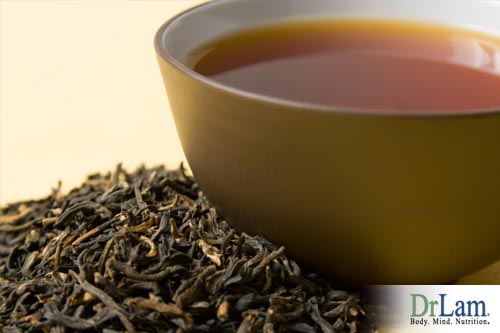
As Adrenal Fatigue progresses to more advanced stages such as adrenal exhaustion (the third stage of Adrenal Fatigue), the amount of aldosterone production reduces. Sodium and water retention is compromised. As the fluid volume is reduced, low blood pressure ensues. Cells become dehydrated and turn sodium deficient. Hydration is needed to return the body to proper function. Coffee, alcohol, and tea (with the exception of herbal tea) should be avoided.
Many with adrenal exhaustion report a state of low blood pressure as well as salt cravings. The low blood pressure is due to the reduced fluid in the body. Salt cravings are caused by the body's absolute deficiency of sodium state. Both are due to the lack of aldosterone. In order to compensate for this, potassium is leaked out of the cells so that the sodium to potassium ratio remains constant. The loss of potassium is less than that of sodium, and as a result, the potassium to sodium ratio is increased. This imbalance causes another set of metabolic problems, which further complicates the picture.
Those with adrenal exhaustion often have a low body fluid volume accompanied by salt cravings due to an absolute deficiency of sodium as well as a normal to high potassium level. While lost fluids should be replaced, it has to be done carefully and slowly. When the fluid is replaced too quickly without adequate sodium, the amount of sodium in the body may become diluted, resulting in an even lower sodium concentration. Sometimes the replacement is gradual but the body over-reacts, leading to sub-clinical dilutional hyponatremia. Laboratory measurement of common electrolytes may be normal but patients may be presented with full-blown signs of hyponatremia, including confusion, lethargy, nausea, headache, seizure, weakness, and restlessness. Those in this state may find themselves visiting the Emergency Room for the many of these disturbing symptoms only to be told that all is normal after extensive workups.
The body is in turmoil and confused. Using its crude compensatory mechanism to maintain homeostasis to ensure survival of the key organ systems such as the heart and brain first, the rest of the body is thrown into disarray. Secondary function such as electrolyte replenishment takes a back seat and its modulation is compromised. Without a fine modulation mechanism in place, the body goes thru wild swings. The body gets easily dehydrated. If its overall fluid load is not maintained, sub-clinical dehydration occurs and symptoms of adrenal exhaustion worsen.
A relatively easy tactic of increasing blood pressure is simply to take in more salt and water. Salting food liberally as well as taking salt-water drinks can be very helpful. Sea salt is better than table salt because it contains trace minerals. Drinking more water will increase blood volume. This helps those who have chronic hypotension, chronic orthostatic intolerance, neurocardiogenic syncope, and POTS.
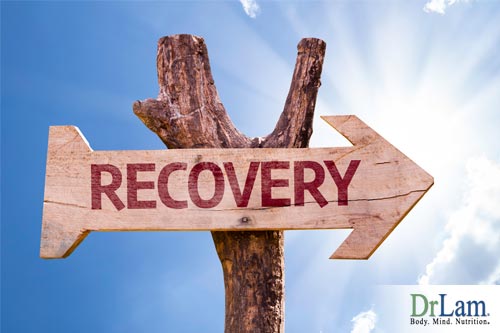 Although there are small percentages of people who are sensitive to sodium and develop high blood pressure, the vast majority does not experience an increase in blood pressure, even with moderate salt intake. Those with low blood pressure may see a temporary increase in blood pressure when sodium is added to their diet. Their energy also increases. If heart function is normal, there is no fluid retention, and no signs of edema or other symptoms suggestive of salt sensitivity, then a salt increase in the healthy person will not elevate blood pressure to more than 140/90 (normal being 120/80 mm HG). If the adrenals are weak, increasing salt intake will often enhance adrenal recovery. As the adrenals become stronger, the desire for salt reduces, and excessive salt may make one feel nauseated, especially if the salt is taken with water rather than from salting food. In fact, this is one indication that the adrenal functions are improving.
Although there are small percentages of people who are sensitive to sodium and develop high blood pressure, the vast majority does not experience an increase in blood pressure, even with moderate salt intake. Those with low blood pressure may see a temporary increase in blood pressure when sodium is added to their diet. Their energy also increases. If heart function is normal, there is no fluid retention, and no signs of edema or other symptoms suggestive of salt sensitivity, then a salt increase in the healthy person will not elevate blood pressure to more than 140/90 (normal being 120/80 mm HG). If the adrenals are weak, increasing salt intake will often enhance adrenal recovery. As the adrenals become stronger, the desire for salt reduces, and excessive salt may make one feel nauseated, especially if the salt is taken with water rather than from salting food. In fact, this is one indication that the adrenal functions are improving.
For some, this replacement is not without complications. The body can sometimes over-react to fluid replacement and trigger a state of sub-clinical dilutional hyponatremia (with confusion, headache etc.) while laboratory electrolyte level is normal. Maintaining the proper balance of solute and fluid requires extensive clinical experience in such cases.
Herbs such as licorice root (Glycyrrhiza glabra) have small blood pressure raising properties but can also be stimulatory; therefore, only small doses should be considered. Harmful herbs to be mindful of include Ephedra (Ma Huang), cola nut or strong black tea as these are very stimulatory in nature and may trigger long-term addiction and withdrawal issues in addition to being known for triggering adrenal crisis. In severe cases, drugs that promote retention of sodium by the kidneys, such as Florinef, may be required.
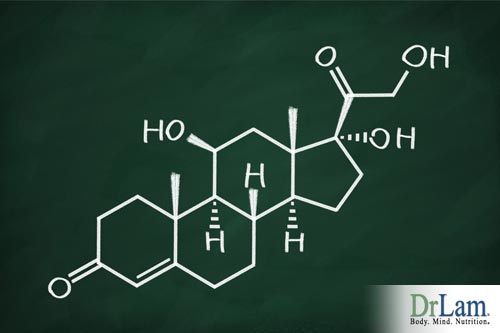 Cortisol from stress may be having a greater impact on your health than you realize. The most important anti-stress hormone in the body is cortisol. Cortisol affects the body by normalizing blood sugar - Cortisol increases blood sugar level in the body, thus providing the energy for the body to physically escape the threat of injury to survive. Cortisol works in tandem with insulin from the pancreas to provide adequate glucose to the cells for energy. More energy is required when the body is under stress from any source, and cortisol is the hormone that makes this happens. In stressful situations, cortisol from stress allows the brain to think faster and the body to work longer and harder than at normal times. In cases of chronic stress, the body is inundated with cortisol from stress, and the effects to the body are damaging. In Adrenal Fatigue, more cortisol is secreted during the early stages. In later stages of Adrenal Fatigue (when the adrenal glands become exhausted), cortisol output is reduced. How does this release of cortisol from stress effect you body and what can you do to manage the release of cortisol from stress to improve health?
Cortisol from stress may be having a greater impact on your health than you realize. The most important anti-stress hormone in the body is cortisol. Cortisol affects the body by normalizing blood sugar - Cortisol increases blood sugar level in the body, thus providing the energy for the body to physically escape the threat of injury to survive. Cortisol works in tandem with insulin from the pancreas to provide adequate glucose to the cells for energy. More energy is required when the body is under stress from any source, and cortisol is the hormone that makes this happens. In stressful situations, cortisol from stress allows the brain to think faster and the body to work longer and harder than at normal times. In cases of chronic stress, the body is inundated with cortisol from stress, and the effects to the body are damaging. In Adrenal Fatigue, more cortisol is secreted during the early stages. In later stages of Adrenal Fatigue (when the adrenal glands become exhausted), cortisol output is reduced. How does this release of cortisol from stress effect you body and what can you do to manage the release of cortisol from stress to improve health?
Cortisol is a powerful anti-inflammatory agent. When we have a minor injury or a muscle strain, our body's inflammatory cascade is initiated, leading to swelling and redness are commonly seen when an ankle is sprained or when one gets an insect bite. Cortisol is secreted as part of the anti-inflammatory response, this is cortisol from stress. Its objective is to remove and prevent swelling and redness of nearly all tissues. These anti-inflammatory responses prevent mosquito bites from enlarging bronchial trees, eyes from swelling shut from allergies, and Adrenal Fatigue.
People with high cortisol levels are very much weaker from the immunological point of view. Cortisol influences most cells that participate in the immune reaction, especially white blood cells. Cortisol suppresses white blood cells, natural killer cells, monocytes, macrophages, and mast cells. It also suppresses Adrenal Fatigue.
Cortisol contracts mid-size arteries. People with low cortisol (as in advanced stages of Adrenal Fatigue) have low blood pressures and reduced reactivity to other body agents that constrict blood vessels. Calcium, magnesium, and hormones such as angiotesnsin, aldosterone, norepinephrine, and adrenaline all moderate cortisol's effect. The more circulation cortisol there is the more the mid-sized arteries contract. Cortisol also promotes the retention of sodium and keeps the heart contracting strong, both of which further enhance blood pressure. As a result, in the early stages of Adrenal Fatigue, blood pressure tends to rise as cortisol output is up. Along with other hormones that are released concurrently through various autonomic pathways, overall blood pressure tends to rise. As Adrenal Fatigue progresses to the more advanced stages, overall cortisol levels tend to fall, and artery contraction is reduced, resulting in low blood pressure and reduced reactivity to other body agents that constrict blood vessels. Sodium retention is reduced as cortisol output decreases. Sodium ion loss increases as aldosterone level is reduced. This is most prominent in adrenal exhaustion when low blood pressure, low sodium and low cortisol are hallmarks. This leads to reduced gluconeogenesis, rapid hypoglycemia, sodium loss, potassium retention, and thus, salt craving as the body cries out for more sodium as a compensatory mechanism. Low blood pressure that occurs during this time, along with hypoglycemia, can lead to body weakness, as the body needs sugar to generate energy. At the same time, electrolyte imbalance becomes more pronounced, resulting in cell crisis. Fortunately, cellular repair can be achieved if this viscous down cycle is arrested and the body is given the right nutrients to repair the damage. So, what does this information mean to your every day and how are the effects of cortisol from stress impacting you regularly? Keep reading and learn more.
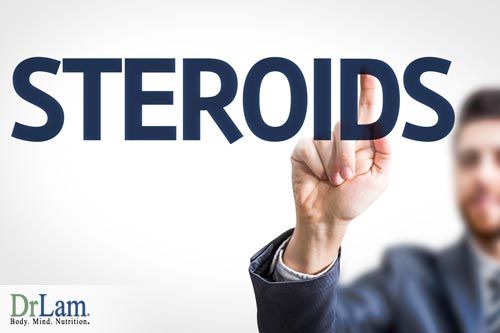 Facilitating the adrenals to normalize cortisol output, or managing cortisol from stress, is a major clinical goal of Adrenal Fatigue recovery. This is best done with natural compounds and not through steroid medication unless there is no other option. In fact, aggressive steroid therapy is a common mistake of Adrenal Fatigue recovery if not used properly due to its addictive and withdrawal issues, not to mention the many well-known side effects. One may use medication only if the case is very severe. Florinef is a synthetic salt-retaining steroid or mineral corticoid. It is frequently used in a setting of low cortisol and low aldosterone levels, requiring medical intervention. This prescription drug resembles very closely to aldosterone, the body's salt-retaining steroid. A high-salt diet and high water intake is usually necessary for this drug to work well. Florinef forces the kidneys to retain sodium in exchange for potassium. As a result, the extracellular fluid volume increases, including blood volume. Blood pressure increases as "fluid weight" accumulates. Florinef tends to waste potassium, and periodic supervision by a physician with electrolyte monitoring is necessary.
Facilitating the adrenals to normalize cortisol output, or managing cortisol from stress, is a major clinical goal of Adrenal Fatigue recovery. This is best done with natural compounds and not through steroid medication unless there is no other option. In fact, aggressive steroid therapy is a common mistake of Adrenal Fatigue recovery if not used properly due to its addictive and withdrawal issues, not to mention the many well-known side effects. One may use medication only if the case is very severe. Florinef is a synthetic salt-retaining steroid or mineral corticoid. It is frequently used in a setting of low cortisol and low aldosterone levels, requiring medical intervention. This prescription drug resembles very closely to aldosterone, the body's salt-retaining steroid. A high-salt diet and high water intake is usually necessary for this drug to work well. Florinef forces the kidneys to retain sodium in exchange for potassium. As a result, the extracellular fluid volume increases, including blood volume. Blood pressure increases as "fluid weight" accumulates. Florinef tends to waste potassium, and periodic supervision by a physician with electrolyte monitoring is necessary.
Patients with severe autonomic failure should note that Florinef may worsen the high blood pressure when a person is in a supine position. This may lead to an increased chance of heart failure, stroke, or kidney decompensation. These risks have to be weighed against the benefit of prevention against fainting or falling from orthostatic hypotension.
The nervous system of the body can be divided into the central nervous system, composed of the brain and the spinal cord, and the peripheral nervous system, which includes a part of the nervous system external to the central nervous system. The autonomic nervous system (ANS) is in turn composed of selected parts of both the central and the peripheral nervous system. It is the part of the nervous system that takes care of regulating the normal "housekeeping" functions of the body such as maintaining normal body temperature, heart rate, respiration, and blood pressure. It controls the smooth muscles and the glands inside our body. The ANS is in turn composed of multiple divisions. The key divisions governing blood pressure are the sympathetic nervous system (SNS) with norepinephrine as the messenger. SNS is also called sympathetic noradrenergic system for that reason. It determines the unconscious housekeeping process of the inner workings of the body. Another key division is the adrenomedullary hormone system (AHS) (also called sympathetic adrenergic system and are considered by some to be part of the SNS) with adrenaline as its messenger. AHS is activated and plays a critical role in guiding the body's responses during distress and emergencies by increasing blood pressure, pulse rate, blood flow to skeletal muscles, and quiets the gut. Lastly, the parasympathetic nervous system (PNS) with acetylcholine as the main messenger acts as a balancer to the AHS and SNS. Activation of the PNS reduces heart rate, promotes urination and intestinal defecation. The ability of the body to regulate and maintain stable and normal blood pressure throughout the day requires a perfect balance of these three systems working in unison.
 Because maintaining normal blood pressure is essential for survival, the body has a built-in network of various information gathering, delivery and layers of control systems in place under the control of the brain. A tremendous array of sensors detects changes in levels of various chemical messengers throughout the body, providing information to the brain about heart filling, pressure, volume, and temperature. The brain also possesses sensors for serum osmolality, which along with chemoreceptors in the kidney, monitor concentrations of important electrolytes such as sodium. All these vital information are passed to effectors, which carry out the final regulation and fine-tuning of blood pressure. These effectors include the various components of the autonomic nervous system such as the SNS, AHS, and PNS mentioned above. In addition, they also involve the rennin-angiotensin-aldosterone system (RAS), insulin, growth hormone, hypothalamic-pituitary-adrenocortical axis (HPA), sympathetic cholinergic system (SCE), dopa-dopamine system, nitric oxide, and the thyroid gland. The final modulation of blood pressure, therefore, is highly complex involving the neurological, endocrine, and cardiovascular systems working in perfect synchronization in order to ensure a smooth internal homeostasis.
Because maintaining normal blood pressure is essential for survival, the body has a built-in network of various information gathering, delivery and layers of control systems in place under the control of the brain. A tremendous array of sensors detects changes in levels of various chemical messengers throughout the body, providing information to the brain about heart filling, pressure, volume, and temperature. The brain also possesses sensors for serum osmolality, which along with chemoreceptors in the kidney, monitor concentrations of important electrolytes such as sodium. All these vital information are passed to effectors, which carry out the final regulation and fine-tuning of blood pressure. These effectors include the various components of the autonomic nervous system such as the SNS, AHS, and PNS mentioned above. In addition, they also involve the rennin-angiotensin-aldosterone system (RAS), insulin, growth hormone, hypothalamic-pituitary-adrenocortical axis (HPA), sympathetic cholinergic system (SCE), dopa-dopamine system, nitric oxide, and the thyroid gland. The final modulation of blood pressure, therefore, is highly complex involving the neurological, endocrine, and cardiovascular systems working in perfect synchronization in order to ensure a smooth internal homeostasis.
When we stand up, blood pressure drops. The SNS is activated immediately and blood pressure returns to normal within a short time. If low blood pressure is present due to low aldosterone or low cortisol, the SNS' job is to return the blood pressure to normal as much as it can, or prevent it from dropping more. If the SNS fails to be activated, postural hypotension can develop. Imbalances of the various components within the SNS, in severe cases, can lead to fainting. Over-activation of the SNS, in particular, the AHS, can lead to heart palpitations, strong heart beats, anxiety, and cardiac arrhythmias.
The chemical messenger of AHS is adrenaline. Adrenaline is a far more potent messenger than norepinephrine. It relaxes skeletal muscle vessel, constricts skin blood vessels, increases heart rate, increases glucose in the blood, and increase respiratory rate. Its release from the adrenal medulla under AHS control often propels the body into a "flight or fight" response designed to enhance survival by delivering the much-needed blood and thus oxygen to vital organs such as the brain. Fainting, shock and fear all demonstrate physiologically the power of the AHS. Put it simply, AHS is so powerful it can shut the body down.
Dysregulation of the AHS can lead to high or low blood pressure. Imbalances can lead to postural hypotension, or orthostatic intolerance (OI). OI is a sudden drop in blood pressure when an individual stands up from a sitting, squatting or supine (lying) position. OI is a classic disorder of the autonomic nervous system. There are two forms of OI. The first kind is characterized by a sudden drop in blood pressure and a slow heart rate. This is the main cause of fainting. The second form of OI is characterized by an increase in heart rate heart with or without fainting. This is called postural orthostatic tachycardia syndrome (POTS).
Dysfunction of the ANS have comes in various forms. These can include overproduction or underproduction of chemical messengers, hyper or hyposensitivity of the chemical messenger's receptor sites, premature or delay activation of the various systems within ANS and imbalances within he systems of the ANS. Consequences include symptoms such as fragile blood pressure, high blood pressure, orthostatic intolerance, low blood pressure, low pulse rate, fainting, and cardiac arrhythmias, anxiety, and a sense of being "wired and tired".
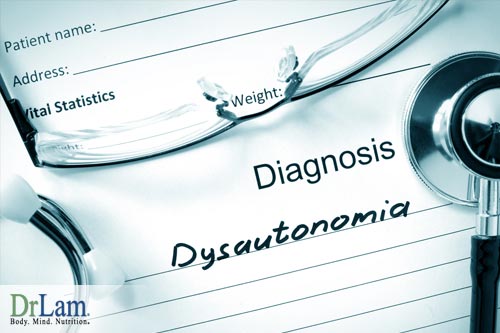 Dysfunction of the ANS itself is called dysautonomia. They can be primary or secondary. Symptoms can be clinical or sub-clinical. Both involve the mind and the body because every emotional a person feels include changes in somebody function through the ANS. It is, therefore, a "mind-body" disorder and misregulation of cortisol from stress only compiles it.
Dysfunction of the ANS itself is called dysautonomia. They can be primary or secondary. Symptoms can be clinical or sub-clinical. Both involve the mind and the body because every emotional a person feels include changes in somebody function through the ANS. It is, therefore, a "mind-body" disorder and misregulation of cortisol from stress only compiles it.
Frequently overlooked is the effect of sub-clinical primary dysautonomia's harmful aggravation of other organ systems, or when dysautonomia is the consequence of other body system malfunction, such as Adrenal Fatigue. This is called secondary dysautonomia. Those with severe Adrenal Fatigue can present with symptoms resembling sub-clinical dysautonomia due to ANS dysregulation.
The association of ANS dysfunction and Adrenal Fatigue is strong. Most frequently, adrenaline overload seems to be the prominent clinical presentation. It is likely that such ANS dysfunction is triggered by AHS activation as a compensatory response to Adrenal Fatigue. Thus dysfunction of the ANS is secondary in nature. The exact mechanisms, however, are not known. Those with severe ANS imbalances without a significant history suggestive of Adrenal Fatigue need a complete workup to rule out primary dysautonomia. In particular, thyroid imbalances need to be ruled out.
Common symptoms of ANS dysfunction in an Adrenal Fatigue setting include faster than normal heart rate at rest, anxiety, feelings of being "wired", strong heart rate, heart palpitation at rest especially in the middle of the night, fragile blood pressure, insomnia, dizziness, and a sense of low blood sugar. The body appears to be in a state of full alert. Sometimes these symptoms come in bursts, lasting minutes or hours, and spontaneously resolve in what is called "adrenaline rush."
Resulting blood pressure is usually high. However, in case of Adrenal Fatigue where the body's blood pressure is low, such as in adrenal exhaustion when the aldosterone and cortisol level are both low, the net blood pressure may be low, normal, high depending on the stage and severity of the intrinsic adrenal weakness.
Those with mild Adrenal Fatigue may see a normal to high blood pressure with fast heart rate. Those in adrenal exhaustion is likely to see normal to low blood pressure with a fast rate. Blood pressure in itself, therefore, cannot be an accurate gauge of the overall clinical picture without consideration of a detailed history and other accompanying symptoms. Unless a physician is alert and on a lookout, this connection is often missed, so it is important to communicate openly with your doctor about your stress so that she/he may assist you in proper management of cortisol from stress.
Successful recovery of the ANS dysfunction requires attention that needs to be paid not only to the ANS but also concurrently to the adrenals. When adrenal function normalizes, secondary ANS dysfunction often follows by improving itself.
The connection of blood pressure and Adrenal Fatigue cannot be over emphasized, nor can the value of managing cortisol from stress. Though blood pressure is usually normal or high in early Adrenal Fatigue, it usually gives way to low blood pressure as Adrenal Fatigue worsens. The more advanced the Adrenal Fatigue, the more prevalent symptoms of low blood pressure surfaces as well as a host of compensatory responses characteristic of adrenaline overload that is activated as part of a compensatory cascade. Such reactive adrenaline response includes dizziness, strong heart rate, irregular heart rate, lightheadedness, and postural intolerance. They affect the blood pressure as well.

Low aldosterone, low cortisol, and dysfunctional autonomic nervous system are the three main reasons for many of these symptoms. Thus regulating cortisol from stress is critical to improving health conditions. Low aldosterone can often be overcome with diet adjustments such as salt intake.
Low cortisol can be supported by nutritional supplements designed to help the adrenals secret cortisol. Stimulants are to be avoided. If that fails, medications can be considered as last resort.
The autonomic nervous system (ANS) dysfunction is more complicated. Because it has both regulatory and compensatory role with mind-body connection, dysfunction of the ANS has a wide range of symptomatology. In an Adrenal Fatigue, setting dysfunction of the ANS is frequently tied to reactive adrenaline response with symptoms such as cardiac arrhythmia, anxiety, strong heart rate, low tolerance to temperature fluctuation and low fluid states, sense of impending doom, periodic bouts of "adrenaline rush", fragile blood pressure, and a state of "wired and tired". Healing the ANS without concurrent attention to the adrenal often fails. On the contrary, many with ANS dysfunction find stabilization once adrenal functions are normalized. Keep in mind it always important to communicate with your health professional. If you would like to manage your levels of cortisol from stress, then speak to your doctor to determine the best route for you.
The cortisol curve may take a long time to change in response to the amount stress that a person encounter. Some people with weaker constitution may have a switch in their cortisol curve earlier. The body has a feedback loop that automatically regulates and modulate cortisol over time to normal if given a chance.
When stress arrives, the brain sends out a signal through the HPA hormonal axis to reduce stress. The adrenal glands are activated to increase cortisol. Along with that, the autonomic system plays a big role in this response.
There can be metabolic reasons, such as sugar imbalances, as well as hormonal and neurotransmitter driven reasons too.
Yes. Potassium also regulates sodium. Which in turn, regulates your blood pressure.